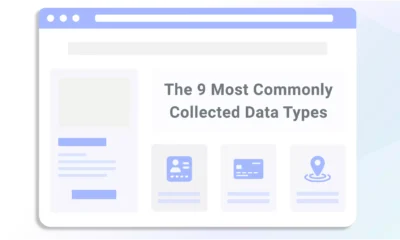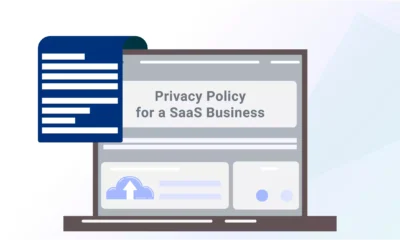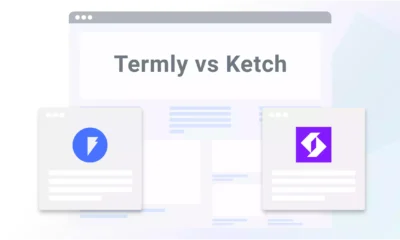Imagine you’re building a house. Before you start hammering nails or painting walls, you need a solid foundational blueprint.
The same goes for your privacy program, and the first crucial step in creating that blueprint is conducting a data inventory.
A data inventory is the foundation of a comprehensive privacy program for your organization.
It allows you to understand the scope and complexity of data processing within your organization and address privacy risks proactively.
By knowing what data you possess, where it resides, and how it is collected, processed, and shared, you gain a comprehensive understanding of your data landscape.
Let’s explore why a data inventory should be the starting point for your privacy program.
What Is a Data Inventory?
A data inventory is an all-encompassing map of the personal data that flows through your organization.
It acts as a catalog of all the data your company possesses, including up-to-date details about the data and its sources — and may be subject to applicable data privacy laws.
When properly conducted, your data inventory should walk you through where your organization’s data is securely located and how it was obtained and explain your purposes for processing the information in the first place.
How Should a Data Inventory Be Conducted?
So, how should a data inventory be conducted? Is it better to take a systems or business process approach?
Let’s look at the possible pros and cons of both methods to help you determine the best approach for your business.
Systems Approach
Some companies begin with a systems approach, which involves creating a list of all the places where data is stored, like software, databases, and network drives.
While this approach provides an overview of data storage locations, it may fall short from a privacy perspective.
For example, to truly understand data handling practices, it is crucial to dive deeper through an understanding of:
- How data is collected
- How data is used
- Where data is stored
- To whom data is shared.
However, if you use a systems approach, you may not be able to determine your business’s answer to these specific questions.
That’s why we highly recommend conducting a data inventory from a business process approach, which is much more thorough and effective.
Business Process Approach
A data inventory using a business process approach goes beyond simply listing storage locations. It goes further and focuses on understanding the various processing activities that take place in your company.
For example, you might explore marketing activities such as:
- Email marketing
- Digital analytics
- Targeted advertising
- Customer surveys
- Webinars.
Each of these activities collects and uses personal data differently, even if they’re stored in the same system.
By doing the data inventory and documenting it at the business process level, you can better understand how your business collects and uses data.
This understanding is especially important when drafting a privacy notice.
We must be able to list the different purposes for how data is used in our privacy notice, and we need to be able to understand how data is processed when honoring individual rights requests.
Privacy Impact Assessments
Another reason why we recommended taking a business approach is that it provides necessary insights to honor individual rights requests and determine when a privacy impact assessment or a PIA is legally required.
Assessing privacy risks and mitigating them becomes easier when armed with the knowledge gained from your data inventory.
This process allows you to effectively identify potential vulnerabilities and prioritize your privacy efforts. You can also minimize the likelihood of data breaches and other privacy incidents by implementing targeted safeguards and controls.
How Can Businesses Benefit From Building a Data Inventory
Businesses benefit from building data inventories in several ways, like assisting with legal compliance and building and maintaining customer trust.
Let’s discuss the specific advantages in detail throughout this next section.
Visibility and Accountability
A data inventory gives you a clear view of all the data flowing through your company.
You can see where it comes from, what type of data it is, and how it moves around.
This heightened visibility not only helps you understand the privacy risks associated with each dataset but also fosters a culture of accountability.
When everyone in your organization knows the importance of responsible data handling, you can build trust with your customers and stakeholders.
Compliance With Regulations
Data privacy laws outline strict guidelines businesses must follow to collect, process, and use personal data from users.
A data inventory helps you comply with some aspects of these laws.
For example, privacy regulations like the General Data Protection Regulation (GDPR) and the California Consumer Privacy Act (CCPA) demand businesses have a comprehensive understanding of how they process their data.
By mapping your data inventory against these various regulatory requirements, you can identify potential areas of risk and rectify them proactively.
It’s like having a compass that guides you through the privacy jungle.
Build Customer Trust
Customer trust is the cornerstone of any successful business.
It’s invaluable, and when your customers know you safeguard their data with care, they feel more comfortable doing business with you.
By starting your well-structured privacy program with a data inventory, you send a powerful message to your customers that their privacy is a top priority.
This messaging builds long-term loyalty, creating a win-win situation for you and your customers.
Resource Optimization
Understanding and mapping your data flows gives you valuable insights into the data’s lifecycle and usage patterns.
By focusing your data protection efforts where they’re most needed, you can optimize your operations, allocate resources more efficiently, and minimize risk.
Competitive Advantage
Demonstrating a commitment to data privacy can be a powerful differentiator in today’s market, giving you a competitive advantage.
Customers are more likely to choose your business over competitors if they believe their data is in safe hands.
By demonstrating your commitment to data privacy through a comprehensive privacy program, you stand out from the crowd and gain a competitive edge.
How To Start a Data Inventory
So, how should you document or get started on a data inventory? There are a few options available, each with its own pros and cons.
Do-It-Yourself Approach
For a simple and cost-effective approach, you can use a manual, do-it-yourself method like a spreadsheet or a similar program such as:
- Airtable
- Basecamp
- Google Docs
- Google Sheets
- Microsoft Excel
A DIY option allows for an easy start, but there are some cons to consider.
For one, it may have limitations in terms of reporting.
And two, it can be time-consuming to keep the inventory updated since it captures data at a specific point in time.
Use Specific Software
The next option, and a step up from the DIY approach, is to use software that utilizes online assessments to gather information during the interview process.
This approach streamlines the process, helps with reporting, and provides the flexibility to make updates as needed, such as adding new questions or answer choices.
Implement a Fully Automated Process
Lastly, there’s the option of an all-automated process where systems are connected to data inventory automation tools.
These tools can pull data elements used in each system and estimate how the data might be processed.
A full-automated approach offers higher accuracy, but it’s still essential to have a privacy expert review and validate the inventory and check for the following:
- Accuracy
- Privacy risks
- Logical coherence (i.e., making sure that what is documented makes sense)
Updating and Auditing Your Data Inventory
Making a data inventory is only the first step. You must also create an ongoing plan to revisit and revise your data inventory for the foreseeable future.
Regularly updating and auditing the data inventory is essential to keep you aware of any changes in data usage and helps you stay compliant with the latest privacy regulations.
The frequency of updates depends on the level of change within your organization.
An annual or biannual review may be sufficient for some companies, while others may require monthly updates.
An automated system can help establish a regular cadence for updating the data elements, with team members reviewing and identifying any risks or changes as needed.
Summary
Data inventories are essential in creating and implementing an efficient and effective privacy program for your business.
Relying on a data inventory to execute a privacy program makes complying with applicable data privacy laws much easier.
But a privacy program is not just about complying with legal obligations. It’s also the first step in building trust with your customers.
By embracing data privacy as a core value and conducting a comprehensive data inventory, you can establish a solid foundation for building that trust and thriving as a business.
It’s a good idea to get started today.











